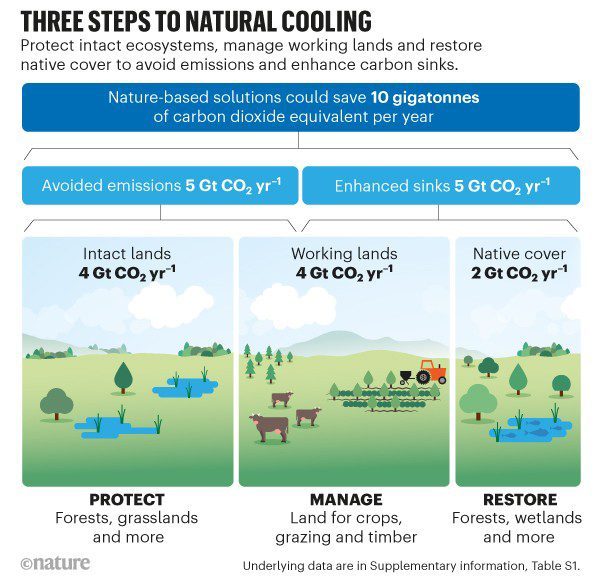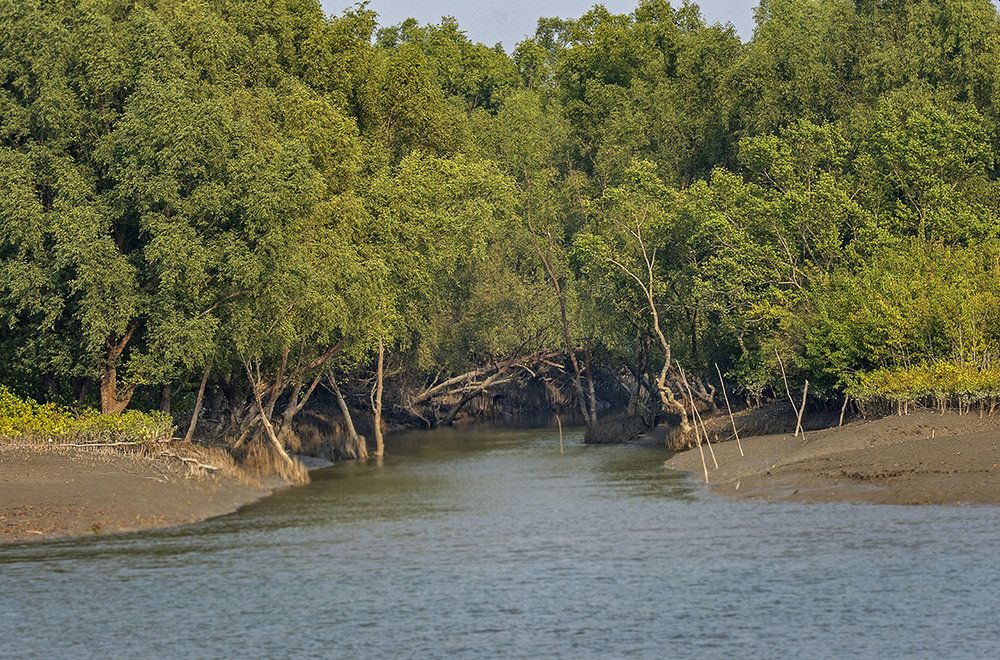Nature-based Solutions Can Help Cool the Planet, If We Act Today!
Projects that manage to protect and restore the ecosystems are presumed to secure win-win outcomes, addressing two of the greatest challenges: climate change and biodiversity loss. The contribution of nature-based solutions will help cool the planet and to mitigate climate change.
Decision-makers need to investigate the role of nature-based solutions to achieve net-zero emissions and stop the rise of global temperature.

Decision-makers need to investigate the role of nature-based solutions to achieve net-zero emissions | Image: Nature
According to the analysis published in the journal Nature, nature-based solutions have a powerful role in reducing long-term temperatures. Land-use change will play an integral role in the cooling of the planet by the second half of the century.
Such solutions must be designed for longevity, having a long-term carbon sink potential – and their impact on biodiversity, equity, and sustainable development. These strategies need to be implemented soon – but not at the expense of other measures.

Nature-based solutions need to scale up rapidly – not at the expense of other robust strategies | Image: Ueslei Marcelino/Reuters
The world is likely to hit 3 degrees Celcius above the pre-industrial period by 2100 with the current policies. It is quite impossible to achieve a reduction in global warming by merely just cutting down greenhouse gases.
It is because sectors like agriculture and heavy industries cannot be driven to zero emissions anytime soon. This calls for an urgent need to remove greenhouse gases from the atmosphere.
For instance, biomass when burnt for energy emits CO2 that can be stored underground. This process to generate bioenergy and capturing the carbon requires vast areas of land – which can compromise food security and time to develop.
One effective way is to use industrial machines that can capture CO2. It is currently a nascent and expensive technology.

The contribution of nature-based solutions will help cool the planet and to mitigate climate change can help achieve the net-zero target | Image: Lynne Buchanan Photography
The ‘natural climate solutions’ aim to reduce the greenhouse gases in the atmosphere in three significant ways. One is to eliminate emissions to protect ecosystems by reducing carbon release.
Another way is to restore ecosystems such as wetlands to soak in the carbon. The third way is to improve land management – including timber, crops, and grazing – to decline methane oxide, carbon dioxide, and nitrous oxide release.
One of the most pondering questions is to conclude nature-based solutions that can help achieve the net-zero target by mid-century. This is because most of the findings are based on objectives, time frames, and model assumptions.
Also Read: A Study Suggests Forests about the Size of France Regrown since 2000
However, the most significant contribution of the nature-based solutions needs to mitigate the peak temperature to 2 degrees Celcius, if not more ambitious target of 1.5. In the 3 degrees Celcius scenario, several issues can constrain the limited nature-based solutions and will be insufficient for the ecosystem to absorb the carbon content in the atmosphere.
One of the major problems is that some of these nature-based solutions, as currently implemented, had unintended consequences. Activities need to be evaluated with the right metrics accounting for a multitude of benefits in long term.
